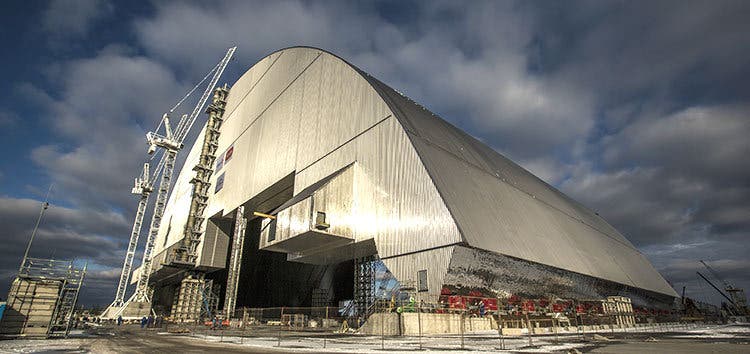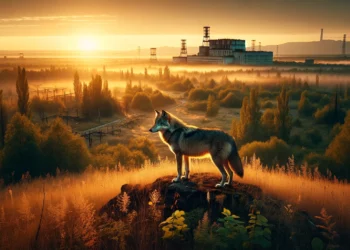On Wednesday, a new high-tech shelter was set in place over Chernobyl’s reactor 4, the site where, on April 1986, one of the worst nuclear meltdowns in history took place.

Image credits EBRD.
Called the New Safe Confinement, or NSC for short, the new shelter is meant to address the shortcomings of the original Sarcophagus erected just after the accident took place 30 years ago. As it was too hazardous to build the NSC on-site, the whole structure was assembled at a distance then slowly inched into place over the reactor on a pair of tracks parallel to the original shelter. Standing an impressive 354ft (108m) tall and 843ft (257m) wide, the NSC had the brief distinction of being the largest mobile metal structure in the world. Now that it’s in place, the NSC will take over the task of insulating reactor 4 from the world.
Entombing the tomb
Thirty years ago, when it exploded, Soviet authorities evacuated a 30-kilometer area around Chernobyl. But the reactor sent clouds of radioactive particles over much of Europe, particularly Ukraine, Belarus, and Russia. The emergency works to encase the reactor were understandably done with speed in mind, to limit exposure — still, the World Nuclear Association lists that at least 28 people died as a result of the accident and another 237 workers in the cleanup and shelter construction suffered from acute radiation poisoning, with 134 of those cases being confirmed later.
The structure also suffered from its hasty construction, being plagued by corrosion and leaks. By the late 90s, parts of the Sarcophagus was at danger of “imminent collapse” according to the European Bank for Reconstruction and Development (EBRD). This is where the NSC steps in.
It’s leak-proof, corrosion-resistant, and made of non-magnetic steel. The external cladding can weather a class 3 tornado or a magnitude 6.0 earthquake, while it’s internal walls are smooth “minimize the risk of dust deposition and accumulation”. Experts are confident that water infiltration in the contaminated area will now have a chance to dry out, and the NSC’s double walls should prevent any radiological emissions in the future. An “active corrosion-control system” has also been installed: after the two halves of the NSC were connected in 2014, the space between them was dried and pressurized, with a ventilation system in place to prevent humidity levels in the shelter from exceeding 40%.
Two remote-controlled, specifically designed cranes have been placed in the NSC Which will dismantle the reactor’s ruins and Sarcophagus. An auxiliary building, where humans will work, was erected to contain all the control systems for the NSC. Now, all that remains is for detailed work (which will be carried out throughout 2017) to make the shelter airtight.
The New Safe Confinement cost roughly €1.5 billion ($1.58 billion) to build. the EBRD and some 40 countries pitched in to fund the project.
Now my question is, what will happen to Chernobyl‘s mutant, radiation gulping fungi?






